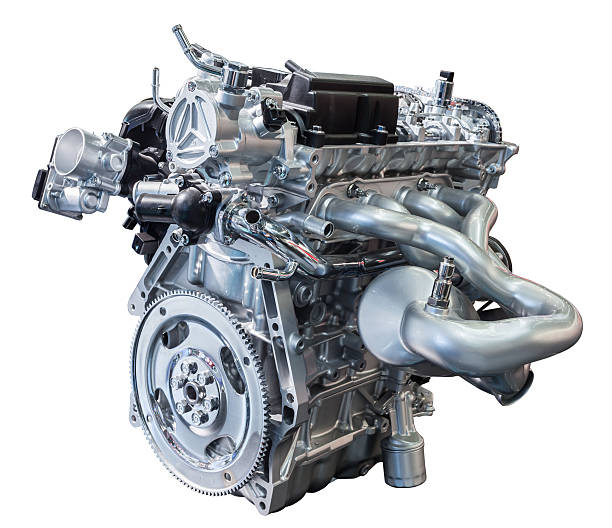Dual-Clutch Transmissions: Shifting Paradigms in Performance
Fast, seamless gear changes have long been the holy grail of automotive performance. Enter the dual-clutch transmission (DCT), a marvel of engineering that's revolutionizing the way we think about shifting gears. This innovative technology promises the best of both worlds: the efficiency and control of a manual gearbox with the convenience of an automatic. But what exactly makes DCTs tick, and how are they reshaping the automotive landscape? Let's dive into the intricate world of dual-clutch transmissions and explore their impact on modern driving.

How Dual-Clutch Transmissions Work
At its core, a DCT consists of two separate clutches, each controlling a set of gears. One clutch manages the odd-numbered gears, while the other handles the even-numbered gears. This unique setup allows the next gear to be pre-selected while the current gear is still engaged, resulting in incredibly quick gear changes.
When a shift occurs, one clutch disengages as the other engages, seamlessly transferring power from one gear to the next. This process happens in milliseconds, often faster than a skilled driver could shift a manual transmission. The result is a smooth, uninterrupted flow of power to the wheels, minimizing the loss of acceleration during gear changes.
Advantages Over Traditional Transmissions
DCTs offer several advantages over both manual and conventional automatic transmissions. First and foremost is shift speed. Gear changes in a DCT can occur in as little as 8 milliseconds, far quicker than even the most skilled manual driver could achieve. This rapid shifting translates to improved acceleration and overall performance.
Fuel efficiency is another area where DCTs shine. By maintaining a more consistent power flow and reducing shift times, DCTs can help vehicles achieve better fuel economy compared to traditional automatics. Additionally, the ability to pre-select gears allows for more optimal gear choices based on driving conditions, further enhancing efficiency.
Impact on Vehicle Dynamics
The implementation of DCTs has had a profound effect on vehicle dynamics. The quick, smooth shifts allow for better weight transfer during cornering, as there’s less disruption to the vehicle’s balance during gear changes. This characteristic is particularly beneficial in high-performance driving scenarios, where maintaining optimal weight distribution is crucial.
Furthermore, the precise control offered by DCTs enables manufacturers to fine-tune the transmission’s behavior to complement a vehicle’s overall performance characteristics. This level of customization allows for a more cohesive driving experience, where the transmission works in harmony with the engine and chassis to deliver optimal performance.
Challenges and Limitations
Despite their numerous advantages, DCTs are not without their challenges. One of the primary issues is complexity. The intricate nature of dual-clutch systems makes them more expensive to produce and potentially more prone to failures compared to simpler transmission designs. This complexity also translates to higher maintenance costs over the life of the vehicle.
Another challenge lies in low-speed drivability. Some early DCT implementations suffered from jerky behavior at low speeds, particularly in stop-and-go traffic situations. While manufacturers have made significant strides in refining DCT software to mitigate these issues, some drivers still prefer the smoother low-speed operation of traditional automatics or the direct control of a manual transmission.
The Future of Dual-Clutch Technology
As automotive technology continues to evolve, so too does the dual-clutch transmission. Manufacturers are constantly refining DCT designs to improve efficiency, reliability, and drivability. One area of focus is the integration of electrification with DCT technology. Some hybrid vehicles now utilize DCTs in combination with electric motors, allowing for even smoother power delivery and improved fuel economy.
Another trend is the development of DCTs with an increasing number of gears. While early DCTs typically featured six or seven speeds, some modern implementations boast up to eight or even nine gears. These additional ratios allow for even more precise optimization of engine performance and fuel efficiency across a wide range of driving conditions.
The Driver’s Perspective
From behind the wheel, a well-implemented DCT can offer a truly engaging driving experience. The rapid-fire shifts provide a sense of immediacy and connection to the vehicle that’s often lacking in traditional automatics. For enthusiasts who appreciate the involvement of a manual transmission but desire the convenience of an automatic, DCTs represent an appealing middle ground.
Many high-performance vehicles now offer paddle shifters in conjunction with their DCTs, allowing drivers to manually select gears when desired. This feature provides an added layer of control and engagement, particularly during spirited driving or track days.
Conclusion
Dual-clutch transmissions represent a significant leap forward in automotive technology, offering a compelling blend of performance, efficiency, and convenience. As manufacturers continue to refine and develop DCT systems, we can expect to see even more impressive implementations in the future. Whether you’re a performance enthusiast seeking lightning-fast shifts or an everyday driver looking for improved fuel economy, the dual-clutch transmission is likely to play an increasingly important role in the cars of tomorrow. As we shift into the future of automotive engineering, DCTs stand as a shining example of how innovation can transform the driving experience.





